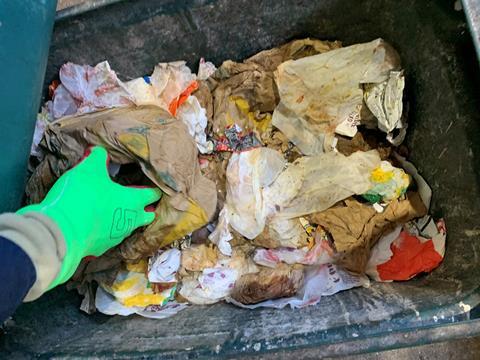
CEFLEX and its partners PCEP, Petcore Europe, Styrenics Circular Solutions, and MORE Recycling have teamed up to understand the reality of today’s collected household packaging waste – a vital step forward towards a circular economy for packaging materials.
Hailed as Europe’s first in-depth analysis of its kind, the resulting data aims to reveal the amounts and types of post-consumer flexible and rigid plastic packaging, in the two main waste streams in which they are collected.
In the view of CEFLEX, the amount of packaging that is placed on the market is only half of the story – a better analysis of packaging used by consumers and collected through waste streams is needed.
The partnership hopes that this new project will help to define and accelerate the development of the required infrastructure, systems, and end-market applications which are required to enable progress in delivering a circular economy.
The project covers all types of consumer packaging found in today’s households – everything from wrappers, bags, and pouches to bottles, trays, and tubes - across key European markets.
“This is vital information about how material flows through the system today – and what collection, sorting, and recycling solutions are required to deliver a circular economy for flexible packaging and other packaging materials,” said Graham Houlder, CEFLEX Project Coordinator.
“Initial results from the first country studied show significant quantities of recyclable materials remaining in the mixed waste stream, suggesting the need to improve the capture and re-use of these materials,” he added.
It is hoped that these types of insights can help Extended Producer Responsibility (EPR) and other schemes to pinpoint what is needed to go ‘circular’ and fine-tune eco-modulation. This will encourage the design of flexible packaging which boosts the amount of recycled content in a variety of end-market applications, according to CEFLEX.
Initial results from the first country analysis (UK) found that 4595kg of material was manually sorted and categorised at two sites; of which 3240kg was residual waste and 1355kg was separately collected recyclables.
66.5% of flexible packaging found in the residual waste samples was categorised as recycle ready mono-material – this includes mono-PE, mono-PP, mono-PET, mono-paper, and mono-aluminium.
In summary, CEFLEX posits that there is currently a significant amount of ready-to-recycle flexible packaging appearing in residual waste samples, where it unlikely to be successfully returned to the economy and used again.














